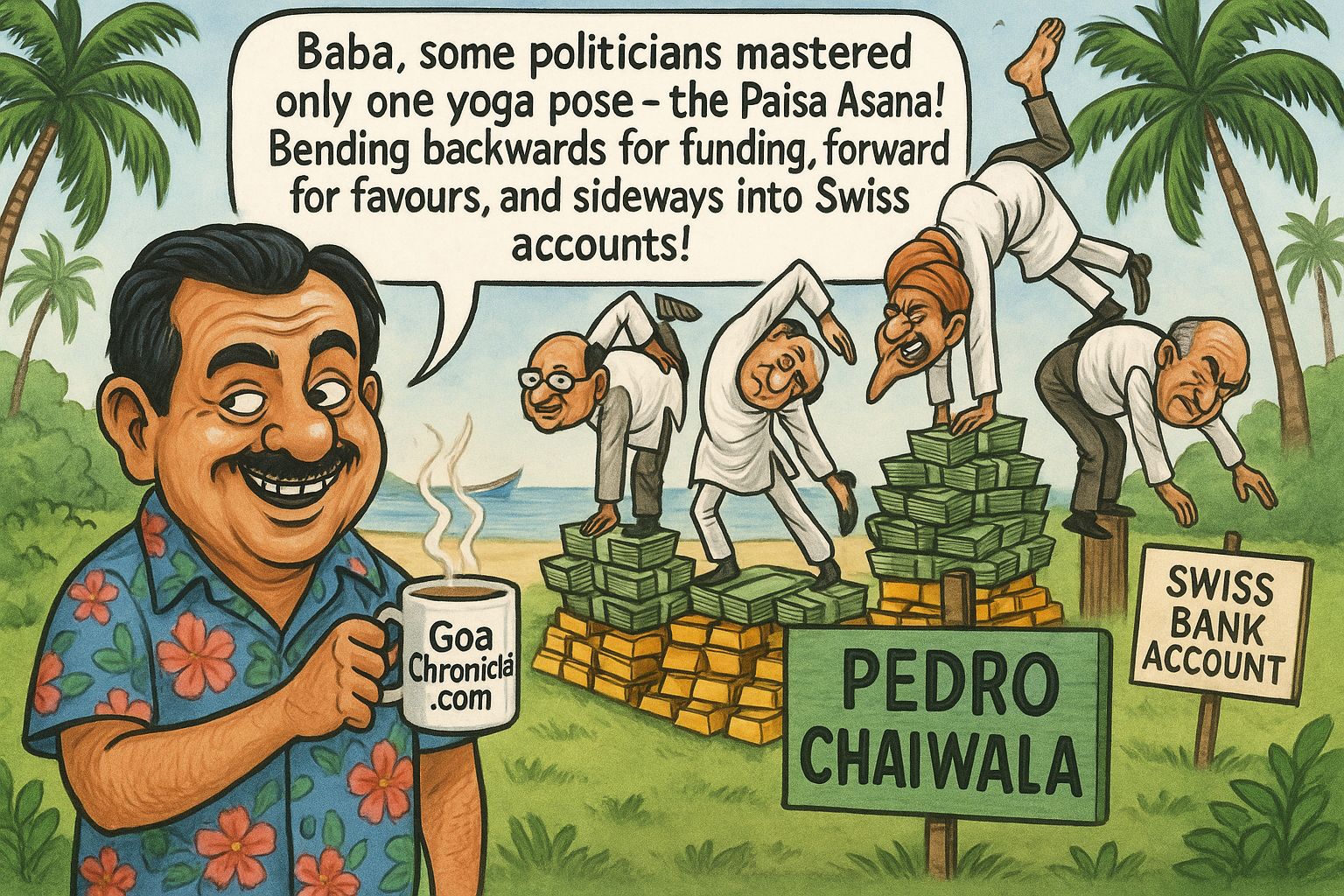Strategic Background
In my earlier analysis published in Goa Chronicle, I had argued that Operation Sindoor was more than a military event, it was a doctrinal shift in India’s approach to deterrence. The operation demonstrated India’s ability to respond with precision, discipline, and political control, while maintaining escalation dominance.
That restraint, however, may also have created a perception in Islamabad that India will remain predictable in its responses. Predictability, in strategic terms, breeds opportunity.
Pakistan’s military establishment today faces one of its most fragile phases in recent history. The economy is collapsing, public trust is evaporating, and its western border with Afghanistan remains volatile. Whenever Pakistan finds itself cornered, it redirects focus toward India, the one issue that unites its fractured polity and gives its military a renewed sense of purpose, which I have been repeatedly saying in all my social media appearances.
For decades, Pakistan compensated for its conventional inferiority by exporting terrorism. When terrorism failed to achieve its objectives, the logical next frontier was economic warfare – cheaper, deniable, and capable of striking confidence rather than territory.
The Next Frontier: Economic Sabotage
India’s global rise rests on its economy. It is no longer merely a regional power. It is now spoken of as the world’s “third pole,” balancing the strategic equation between Washington and Beijing. That rise, while admired by many, unsettles others.
Three powers, Pakistan, China, and a section of the US establishment, view India’s rapid ascent with varying degrees of discomfort. Pakistan sees it as humiliation, China as competition, and Washington as a challenge to its economic order.
Having failed on the battlefield and through proxies, Pakistan may now shift to economic disruption, an attempt to puncture the narrative of India’s unstoppable growth. The targets will not be military. They will be refineries, ports, power grids, and digital networks.
The aim is psychological and symbolic: to show that India is not invincible, that its growth story can be shaken with a few well-placed strikes.
Signals from the Western Front
India’s security establishment appears to be factoring this into its planning. Two powerful signals came recently from the highest levels of government and the armed forces.
Defence Minister Rajnath Singh, speaking in Bhuj, less than 100 km from the Pakistan border, issued a direct warning. He said that if Pakistan dares to act in the Sir Creek area, the Indian reply would “change both history and geography.” His words were carefully chosen. The 1965 reference to Lahore and the reminder that “the road to Karachi also passes through the Creek” were strategic signalling, not rhetoric.
Shortly afterward, Army Chief General Upendra Dwivedi, on 3rd October 2025, spoke in Rajasthan, again along the western front. He declared that the restraint shown during Operation Sindoor would not be repeated if Pakistan continued sponsoring terrorism. His comment that Pakistan must behave “if it wishes to remain on the world map” was a blunt message.
Two strong statements, made days apart, suggest that India anticipates provocation from the west. The government is not merely warning; it is shaping the psychological battlefield in advance.
Why Gujarat Could Be the Next Target
Gujarat has emerged as India’s economic powerhouse. It is home to some of the country’s most strategic industrial assets and global trade arteries.
The Jamnagar refinery of Reliance Industries, the Nayara Energy complex (majority-owned by Russia’s Rosneft), and Adani Group’s ports and terminals form the backbone of India’s energy and export infrastructure.
These installations are not only symbols of India’s growth but also strategically visible and geographically accessible from across the border.
A single precision strike, by drone, missile, or cyber interference, could trigger massive global attention. Even a failed attempt could shake investor confidence and raise insurance costs for India’s western coastline. For Pakistan, this would be a propaganda victory at minimal cost.
Unlike Kashmir, Gujarat represents India’s modern, industrial identity. Attacking it would carry both economic and psychological consequences.
The American Equation
The United States’ position adds another dimension. Under President Donald Trump, Washington has reopened limited military and financial cooperation with Pakistan. The old logic of “carrot and containment” seems to be back in play.
Why would the US tolerate or overlook Pakistani adventurism? There are three reasons.
First, energy politics. India’s purchase of discounted Russian crude and its re-export to Europe has quietly irritated Washington and Brussels. If a refinery linked to Rosneft, such as Nayara, were disrupted, Western capitals would not mourn the loss.
Second, political leverage. Gujarat is not only home to India’s two most powerful political leaders, Prime Minister Modi and Home Minister Amit Shah, but also to the country’s two most visible business houses, Reliance and Adani. A temporary shock in Gujarat could create political and market tremors that ripple through Delhi and Mumbai.
Third, timing. With the Indian Air Force currently operating at around 31 active squadrons, nearly on par numerically with Pakistan, Islamabad may view this as a fleeting window before India’s indigenous Tejas Mk1A, Rafales, and next-generation platforms expand the gap again.
In essence, the US may not directly support Pakistan, but it may also choose not to interfere if India’s economic momentum takes a short-term hit.
China’s Complementary Agenda
Beijing’s incentives are even more straightforward. A distracted India serves Chinese strategic objectives. Every day India spends managing instability on its western front is a day China gains advantage along the LAC and in the Indian Ocean Region.
China’s defence partnership with Pakistan, encompassing stealth aircraft, drones, and battlefield surveillance, ensures Islamabad’s access to real-time intelligence and dual-use technologies.
Economic turbulence in India would not only weaken its position within the Quad but also stall its push for supply-chain diversification away from China. For Beijing, Pakistan’s belligerence is a low-cost lever to keep India tied down.
Hybrid Threats and Internal Vulnerabilities
Economic warfare does not always involve missiles or bombs. It often begins with small, invisible disruptions.
Recent months have seen multiple hoax bomb calls, cyber intrusions, and attempts to derail trains using improvised devices. Each incident, while seemingly isolated, fits into a larger hybrid pattern, one designed to spread uncertainty.
These operations aim to stretch the internal security apparatus, exhaust public patience, and create the perception that the system is always under threat. It’s a psychological siege, the essence of hybrid warfare.
Pakistan has long mastered this art, blending physical and information operations to erode confidence without crossing the threshold of open war.
Airpower Deficit and Strategic Imperatives
India’s airpower capability remains the decisive factor in deterring large-scale conflict. But numbers matter. With squadron strength hovering below 32, far short of the sanctioned 42, India must bridge its capability gap fast.
Quality remains superior, but deterrence requires visible mass and technological redundancy. Until indigenous and imported reinforcements arrive, India must rely on:
- Unmanned platforms for surveillance and precision strikes.
- Networked radar and missile grids for area denial.
- Integrated theatre commands for unified response.
The delays in theatre command implementation must end. The era of compartmentalised operations is over.
Economic Consequences of Conflict
The next confrontation may not aim to occupy land but to destabilise confidence. Even a short conflict targeting energy or logistics hubs could cause:
- Capital flight and currency volatility.
- Stock market correction and investor caution.
- Budget diversion from infrastructure to defence.
A slowdown from 7% to 5.5% GDP growth for even one fiscal quarter could undermine India’s narrative of resilience. For adversaries, that would be victory enough.
Patterns from the Past
This would not be new for Pakistan. The 1993 Mumbai blasts targeted the Stock Exchange. The 2008 attacks hit luxury hotels and financial districts. Both were designed to hurt India’s economic confidence, not its territory.
Gujarat, with its ports and refineries, now represents what Mumbai did three decades ago, the heart of India’s growth engine. That makes it the next logical target in Pakistan’s asymmetric playbook.
Three-Step National Response Plan
- Economic Fortification
Strengthen the domestic economy through deregulation, privatisation, and tax stability. Build redundancy into energy, port, and digital infrastructure. Encourage private-sector participation in defence production to improve resilience.
- Defence Acceleration
Accelerate indigenous production of drones, radars, and missiles. Operationalise theatre commands to remove service-level friction. Stockpile critical minerals and fuel reserves to ensure supply continuity during crises.
- Domestic Coherence
Internal political polarisation weakens national deterrence. Security planning must rise above partisan lines. Unity between the Centre, States, and Opposition is as vital as any weapon system.
Conclusion
The battlefield has changed. The next confrontation may not involve infantry columns or captured outposts. It will play out in cyberspace, in stock markets, and in refineries.
Pakistan will trigger. China will enable. The US may watch.
Operation Sindoor proved that India can dominate the military domain. The next test will be whether India can defend its economic domain with the same foresight and resolve.
Preparation must not wait for provocation. The warning signs are already visible.
The next war, if it comes, will not be for land, it will be for credibility.
DISCLAIMER: This article reflects author’s view point. Goa Chronicle may or may not subscribe to views of the author
































